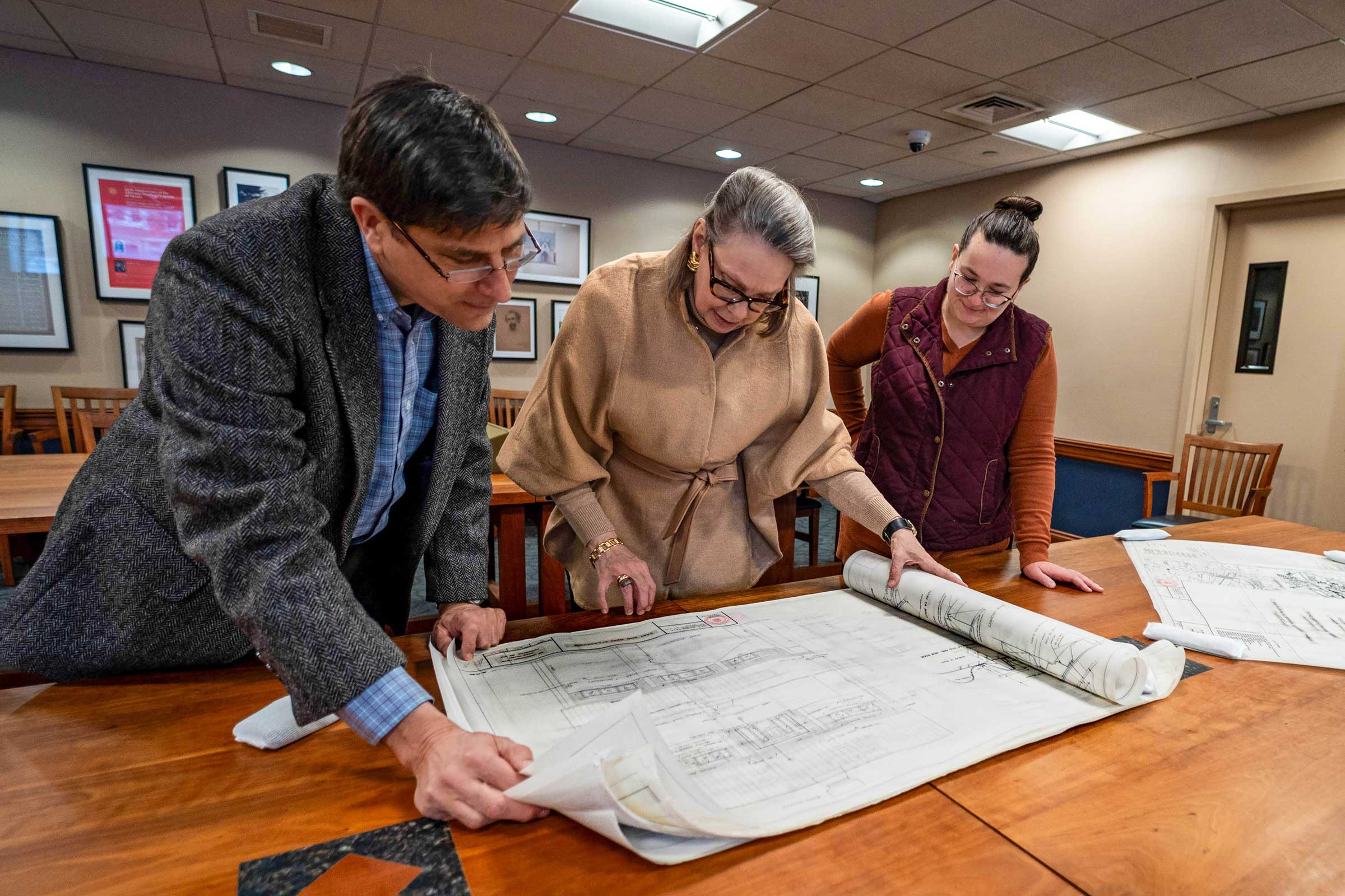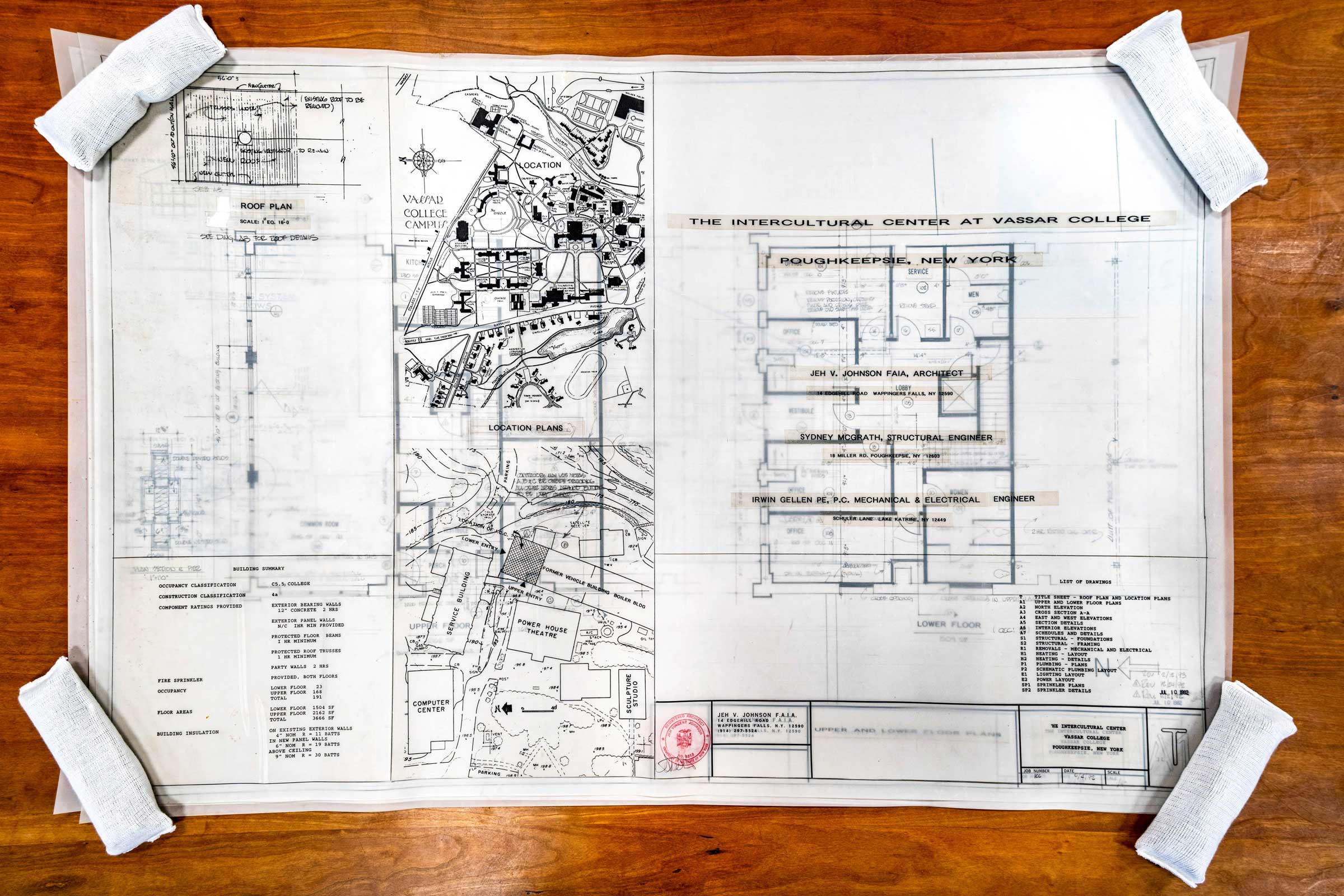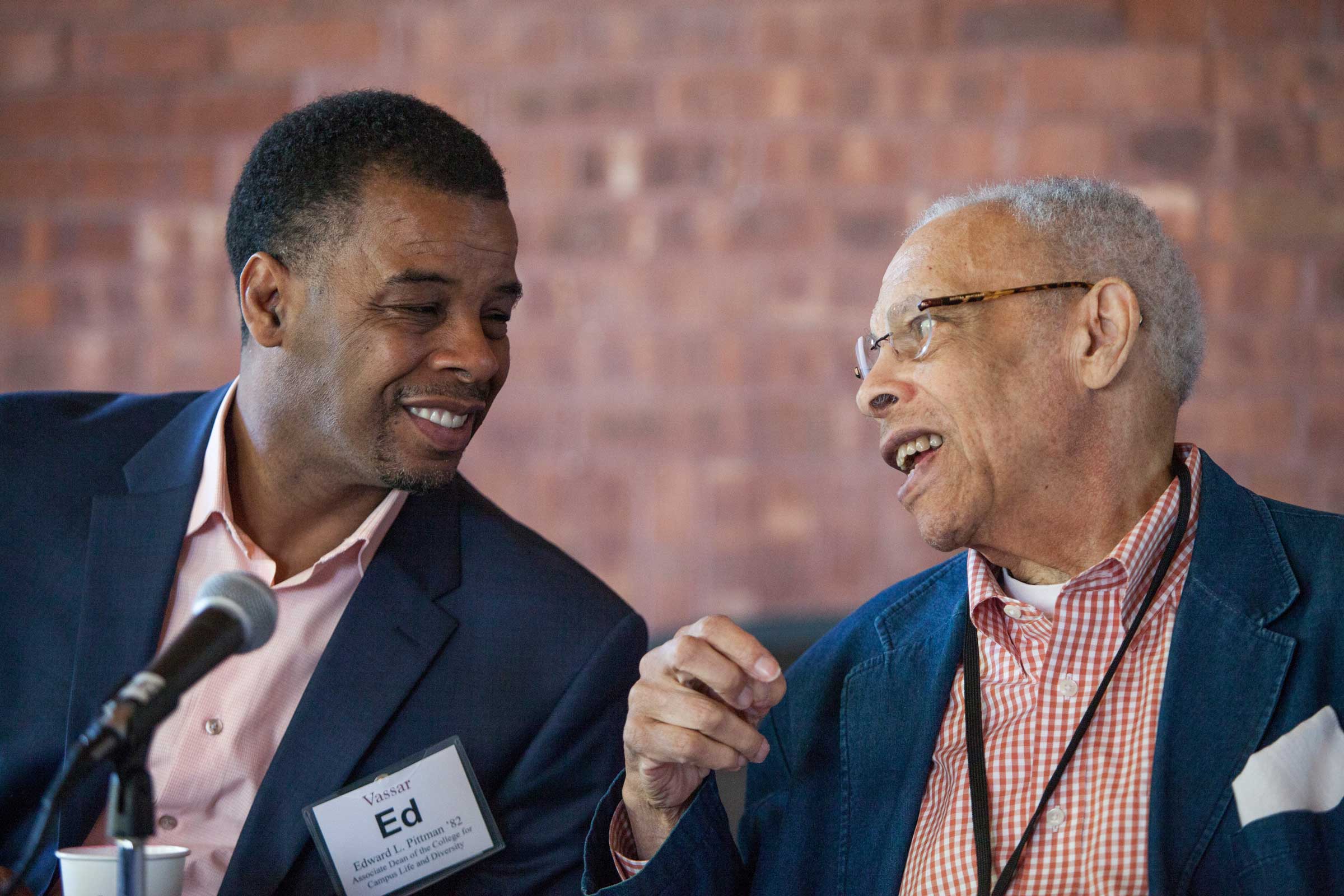Papers of Pioneering Architect Jeh Vincent Johnson Come Home to Vassar
Architectural drawings and personal papers of the late Jeh Vincent Johnson, a renowned architect who taught architectural design at Vassar from 1964 to 2001, are now housed in the College’s Archives and Special Collections Library. And two architects who studied with Johnson at Vassar, Johnson’s family, and others who knew him say those papers are exactly where they ought to be.

“It’s important for us to have these documents because Jeh taught here for so many years and was also a prominent architect himself, so his papers are something we want to preserve,” said Ronald Patkus, Head of Special Collections and College Historian.
Johnson, the father of Jeh Charles Johnson, an attorney who served as United States Secretary of Homeland Security in the Obama Administration, died in January 2021. Two years later, the ALANA Cultural Center, which he designed, was renovated and re-named the Jeh Vincent Johnson ALANA Cultural Center. “I am proud and pleased that Vassar has chosen to honor my father’s legacy by housing his photos, papers and artwork in its Special Collections Library,” Jeh Charles Johnson said. “These records reflect Jeh V. Johnson’s active and creative mind. When Dad passed away four years ago, I was overwhelmed by the generations of his Vassar students who came forward to pay tribute. On behalf of myself and my mother, we thank Vassar for its generosity.”

As a pioneering Black architect, Jeh Vincent Johnson was a strong and tireless champion of women and people of color in architecture, a field where they were and continue to be underrepresented. He co-founded the National Organization of Minority Architects, served on President Lyndon B. Johnson’s National Commission on Urban Problems, and chaired the National Committee on Housing for the American Institute of Architects (AIA). He was elected to the AIA’s College of Fellows, the highest honor for any practicing American architect, and was awarded a special citation from the New York chapter of the AIA for his advocacy on behalf of equal opportunity and housing issues.
Vassar alum Karen Van Lengen ’73, FAIA , a practicing architect and Kenan Professor and former Dean of the School of Architecture at the University of Virginia, said she had been inspired to pursue a career in the field after studying with Johnson at Vassar.
Van Lengen said her former mentor’s legacy, reflected in his papers and drawings, demonstrated his dedication to promoting women and other underrepresented groups. “Jeh leaves a significant legacy as an architect, an educator, and a public advocate,” she said. “He became a prominent architect at a time in this country when Black architects numbered fewer than 1 percent of American architects. His contributions are especially noteworthy for those of us who studied with him and went on to become architects. There was a period of time when Jeh was responsible for steering more women into the field of architecture than any other teacher in a liberal arts college.
“Although Jeh graduated from Columbia, and the archives might have gone there,” Van Lengen continued, “many of us felt that his major contributions were to Vassar College as a legendary teacher and to the Hudson River Valley community as a successful architect and urban planner.”
A short video that highlights Jeh Vincent Johnson’s career as an architect, professor, and activist.
Architect Sigrid Miller Pollin ’71, said Johnson’s “teaching, talent and kindness have influenced my whole life. Jeh was the encouraging force that brought me into the field as an undergraduate art history major. He offered me my first studio experience, and this was pure magic to me.”
Another former student of Johnson’s, Liliane Wong ’81, Professor of Architecture at the Rhode Island School of Design, said she too was glad the Johnson family had decided to donate his papers to Vassar. “It's unfathomable to think of all the contributions Jeh made and how he inspired his students,” Wong said. “Today, many of us are talking about the need for affordable housing, and when Professor Johnson was appointed by President Lyndon Johnson to the National Commission on Urban Problems, he was actively involved in designing low-cost housing. Hopefully, his archives will make this and other information about his legacy available to students and researchers.”
Professor of Art Yvonne Elet, an art and architectural historian who, together with students, has studied Johnson’s work for her course about the campus, said she too was glad that his papers are now housed at Vassar. “It’s important that all of his drawings and documents be housed in one place; and since he did most of his design work in the Hudson Valley and taught here for 37 years, Vassar’s Special Collections Library is an ideal place for them,” Elet said. “Jeh Johnson believed in the agency of architecture to combat poverty and discrimination; and his advocacy took many forms, from his design work, to teaching and mentoring, and his professional service to the field. Now, his archive will enable scholars to tell a fuller story of his work and its important legacy.”

Edward Pittman ’82, retired Senior Associate Dean of the College who worked closely with Johnson on the design of the ALANA Cultural Center for its opening in 1993, said he admired the architect’s willingness to listen to students’ and his ideas on what the center should look like. “Jeh took our input and shaped it into the design,” said Pittman, the center’s founding director and dean for campus life and diversity initiatives at Vassar for nearly 30 years. “He was open to translating our ideas and vision into the physical space; his papers are an important addition to Vassar’s Special Collections archives.”